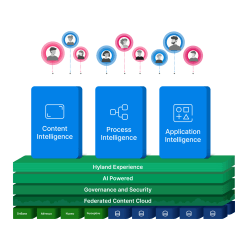Health IT and the six domains of quality
How the right IT tools can support a healthcare organization’s quest for quality.

Now more than ever, healthcare quality is a primary focus for providers. What’s driving this push? The shift from fee-for-service to value-based reimbursement models that is part of Medicare’s reforms. Health systems are not only being measured by their quality of care, but reimbursed based upon it.
Improving quality is no easy task, but luckily there are some remarkable technologies available to support this effort and help healthcare leaders achieve their organizational goals.
Defining Healthcare Quality
The Institute of Medicine defines healthcare quality by the following attributes. Here are a few ways the right technology can support these six domains of healthcare quality.
1. Safety
Healthcare providers should not harm patients while delivering care that is intended to help. A variety of technologies can support this effort. For example, clinical decision support software can alert clinicians to potential adverse drug interactions or possible alternate patient diagnoses. Similarly, barcode-based Closed-Loop Medication Management (CLMM) systems can ensure the right patient receives the right medication in the right dose via the right route and at the right time. Even a basic technology such as a robust document management system can alert key personnel to patient record deficiencies that can negatively impact regulatory compliance and the overall quality of care.
2. Patient Centeredness
Providers should deliver care in a manner that is respectful of and responsive to individual patient preferences, needs and values. Furthermore, these values should guide all clinical decisions. To deliver true patient-centered care, all clinical stakeholders need a comprehensive view into each patients’ entire medical history. This includes discrete data, clinical documentation and all medical images. An Enterprise Content Management (ECM) system and Enterprise Medical Imaging solution that includes a Vendor Neutral Archive (VNA) and enterprise viewing components enables clinicians to access all patient information from core clinical platforms such as an EHR or PACS, providing an informational foundation for patient-centered care.
3. Timeliness
Reducing wait times and potentially harmful delays for those receiving and providing care has a huge impact on quality. Technologies such as tracking systems and automated workflow software streamline patient traffic and clinical processes by automating manual tasks and accelerating cycle times, which can help ensure timely delivery of care.
4. Effectiveness
All care should be evidence-based to ensure optimal outcomes while avoiding both underuse and misuse. Data analytics and Population Health Management technologies assess the information contained in a patient’s medical record and compare it to treatment plan results of patients with similar profiles, which can help ensure providers prescribe the most-effective treatments for patients.
5. Efficiency
To deliver quality care, providers must minimize waste. This includes the waste of equipment, supplies, ideas and energy. There are literally hundreds of technologies that can reduce waste in some way, shape or form around the hospital. The handling of paper is a widespread source of inefficiency. Intelligent data capture, automated workflow and document management technologies can help you vastly reduce the costly creation, routing and retention of paper in all areas of the enterprise — from Accounts Receivable to Human Resources to the Health Information Management department.
6. Equity
Finally, care should not vary in quality because of personal characteristics such as gender, ethnicity, geographic location or socioeconomic status. Modern technologies such as telemedicine and remote patient monitoring can bring the highest levels of care to even the most rural locations. These tools are breaking down the physical barriers that often prevented equitable care in the past.
Providing quality healthcare is more important and challenging than it ever has been.
Fortunately, technology can help providers shoulder the load. Hyland Healthcare’s suite of Healthcare Content Services helps providers connect content to deliver true patient-centered care. By centralizing all your unstructured and semi-structured content and making it accessible via core clinical systems (e.g. EHRs, PACS, etc.), you can equip your clinical stakeholders with all the information they need to drive quality decisions.
Check out this eBook if you’d like to learn more about how a connected healthcare platform can help you tackle the six domains of healthcare quality.
> Learn more | HIMSS Market Insights on improving connected care and advancing interoperability goals










